The easy and quick guide to understanding food labels 🫙

Serving Size and Servings Per Container

The first thing that you will notice on any food label is the Serving Size and Servings per Container.
Serving Size: it is the typical serving for that particular food that is assumed by the manufacturer. This is the amount that they think that you will eat/drink in one meal or sitting.
You as a consumer are not obliged to consume whatever serving is recommended on the box. You may have more or less (more in most cases), just keep in that mind.
On many packages, there is no serving size mentioned. In those cases, the nutrition facts on the label describe the whole food in the package, as in eating the whole thing.
Why is this important?
This is important because the quantities of the nutrients mentioned on the food label are per serving, which are typically less than what you would normally consume in one meal. This might lead to you consuming higher amounts of calories and other nutrients than what you think you had.
Knowing the serving size is important to calculate the actual amount of nutrients (calories in specific) that you are consuming.
A deceptive trick done by food manufacturers is to list the nutrition facts per 100g or per serving rather than the whole box even though they know very well that most people will eat the whole thing in one go. For example, they would say that a bag of chips, which most people would consume in one sitting, has two servings. They would list on the label the nutrition facts per serving, for example, 250 calories. Most unassuming customers who don't know about the serving size will think that the whole bag has 250 calories when it fact has 500 calories. People usually don't pay attention to those details and may be tricked into believing that the package has fewer calories than it actually does.
The number of servings: this is simply the total package size divided by the serving size.
For example, if the package weighs 500g and the serving size is 100g, then the number of servings is 5.
5 x 100g = 500g
To calculate the actual amount of calories and other nutrients in the package it is very important to know whether or not the nutrition facts listed are per serving or per container.
If the food label says that there are 50 calories in 100g or one serving and the box has a weight of 700g, then that means that the actual total calorie count in the package is 7 x 50 calories = 350 calories.
If the nutrition facts are per serving, then you need to multiply all figures by the number of servings to get the actual composition of the whole package.
This becomes less important if you plan to consume the serving size as described on the package, which rarely happens.
Remember this very well and don't be fooled by the low-calorie count on food labels.
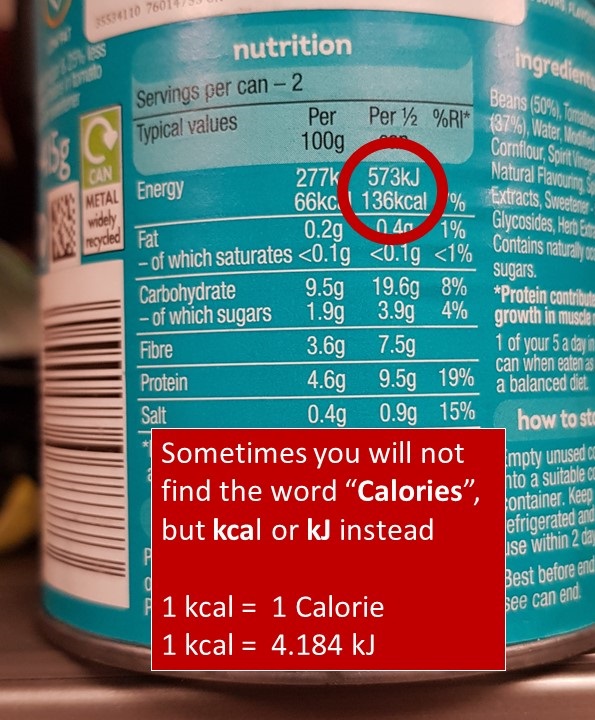
On most labels, you will not find the word calories but Kcal.
1 Kcal = 1 Calorie
Some products will not list energy in calories but in Kj instead. You can do the math to find the number of calories using the below formula:
1 kcal = 4.184 kJ
Dual Columns
On some products, the food label mentions the quantities per serving and container in order to make it easier and clear for people to see the difference.
What do percentage values %DV mean?
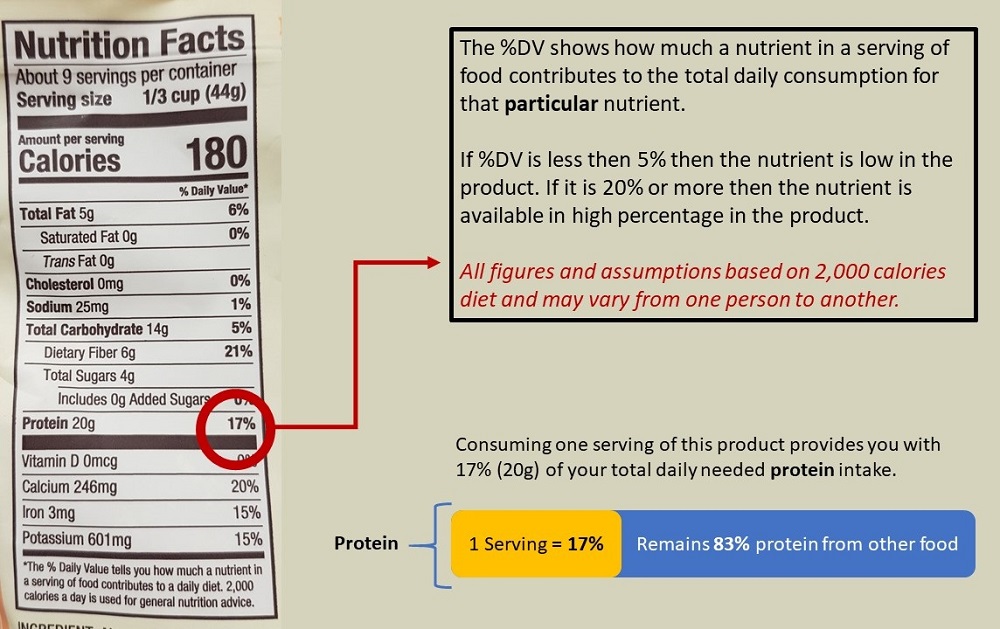
The %DV shows how much a nutrient in a serving of food contributes to the total daily consumption for that particular nutrient. The %DV helps you determine if a serving of food is high or low in a nutrient. The %DV column doesn't add up vertically to 100%. Instead, the %DV is the percentage of the Daily Value for each nutrient in a serving of the food.
Example: Let's assume that the %DV of sodium is 25% per serving. That means that if you consume one serving of that product, you get 25% of your daily recommended sodium intake.
The general guideline is that if a product has 5% or less of something it means that the nutrient is low in the product. If it is 20% or more then that nutrient is available in high percentage in the product. Anything between is average.
Use %DV to compare food products taking into consideration the same serving size. Choose products that are higher in nutrients that you want to get more of and lower in nutrients you want to get less of.
What do calories from fat mean?
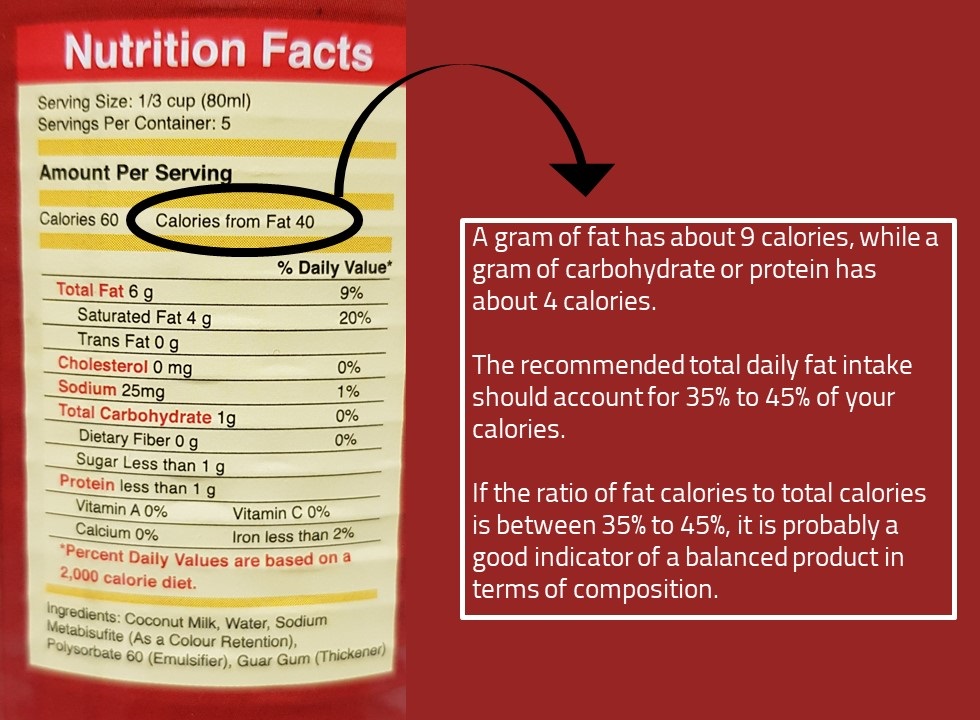
A gram of fat has about 9 calories, while a gram of carbohydrate or protein has about 4 calories. This means that a gram of fat contains roughly double the number of calories per gram.
The recommended total daily fat intake should account for 35% to 45% of your calories. This simply means that 45% of your calories should come from fat and the rest come from proteins and carbs (carbs being the least dominant factor).
This is a good starting point to understand how much fat you need to consume on daily basis. Based on a 2,000 calories diet, that's about 100 grams of fat or less a day.
If the package mentions the number of calories from fat, find the ratio of calories from fat to that of total calories. If the ratio is between 35% to 45%, it is probably a good indicator of a somehow balanced product in terms of composition.
This tip should only be used as a general guideline. If you have the choice, I would recommend that you steer away from anything processed altogether.
Fats
The total number of fats is not really important and you should not choose to prefer a certain product to another just because one has less fat.
Unsaturated fats are very good for your health and they will help you lose or maintain weight.
Avoid products with Trans Fats at any cost. Trans Fats are evil and may cause many health issues in the long run, especially to the heart.
Saturated fat is a controversial topic, some experts argue that it is 100% safe and others say that it may cause issues in the cardiovascular system. Since the debate is not settled, approach saturated fats with caution.
Why the numbers don't add up to the total?
Anytime you read a food label and notice that the total of something is more than the sum of its part is because it is not feasible to list every single component on the food label.
Food manufacturers are obliged to list nutrients that make up most of the product as described by the food manufacturing guidelines in that particular country, which can be different based on the location.
The general rule of thumb is that, if something is missing, then you should not worry too much about it.
Total Sugars Vs Added Sugars
Total Sugars are simply the total amount of sugars in the product whether added or not. Sugar can occur naturally in the ingredients of the product.
For example, if a product has banana in its composition, then that food has natural sugar in it coming from the banana.
Added sugar is sugar that has been added separately to the food.
Total Sugars = Added Sugars + Natural Sugar in the ingredients.
Always look at the total sugars to determine if a type of food is healthy or not. You should aim at products having the lowest amount of sugar possible.
The strategy:
Nutrients to get less from
Get less of or eliminate Trans Fat, Sodium, Sugars, vegetable oils, hydrogenated oils, and partially hydrogenated oils.
Look at the ingredient list beyond the food label and avoid the following. This list is not inclusive. I advise you to look up other ingredients to understand what they are:
- Dextrose (pay attention to anything that ends with OSE, most probably a form of sugar)
- Dextrin
- Tapioca
- Corn Fiber
- Gluten
- Wheat
- Soy Oil
- Corn Oil
- Canola Oil
Nutrients to get more from
- Unsaturated fat
- Dietary Fiber
- Vitamin D
- Calcium
- Iron
- Protein
- Potassium
Avoid genetically modified food or engineered food
Avoid anything that is genetically modified or engineered at any cost. They are extremely bad for your health.
Soy is the most heavily modified food and is also commonly used as an additive. If the label says it contains soy, then it is genetically modified. If you must consume soy products such as tofu or soymilk, make sure the labeling states that the tofu or soybeans are organic.
Corn is also a heavily modified food. If you must consume corn, make sure that it is 100% organic.
Most canola oils come from genetically engineered crops. Avoid whenever you can.
Many dairy farms give cows genetically modified growth hormones to increase milk production. Look for dairy products labeled as rBGH/rBST-free. Aim for organic milk and dairy products whenever possible.
Identifying Genetically modified food
If a product has a 4-digit number, it means the food was conventionally grown i.e. not genetically modified.
If a product has a 5-digit number that begins with a 9, it is organic.
If a product has a 5-digit number that begins with an 8, it is genetically modified.
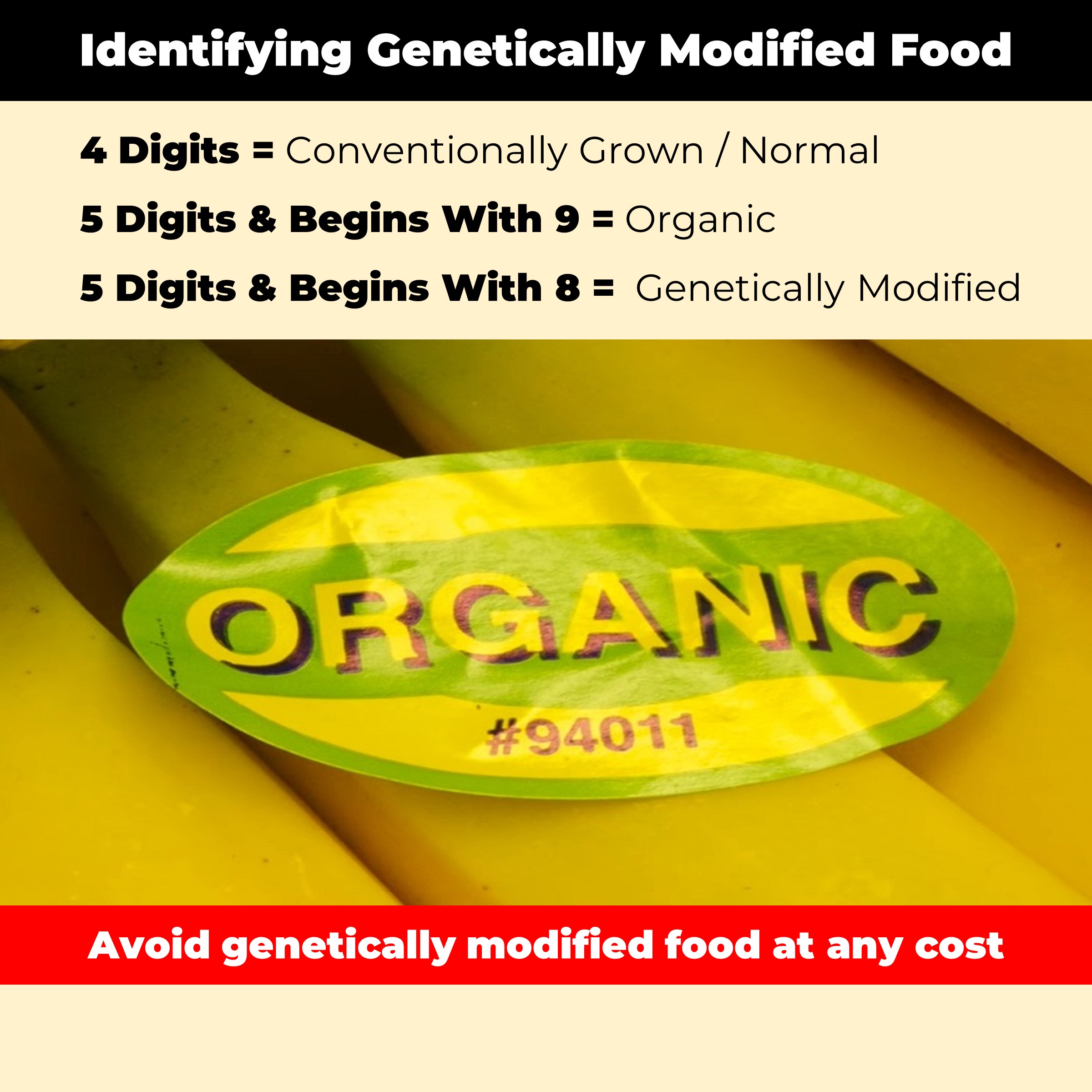
Labeling is optional and not all genetically modified products can be identified, but always look for them when you buy your groceries.
The ingredients list
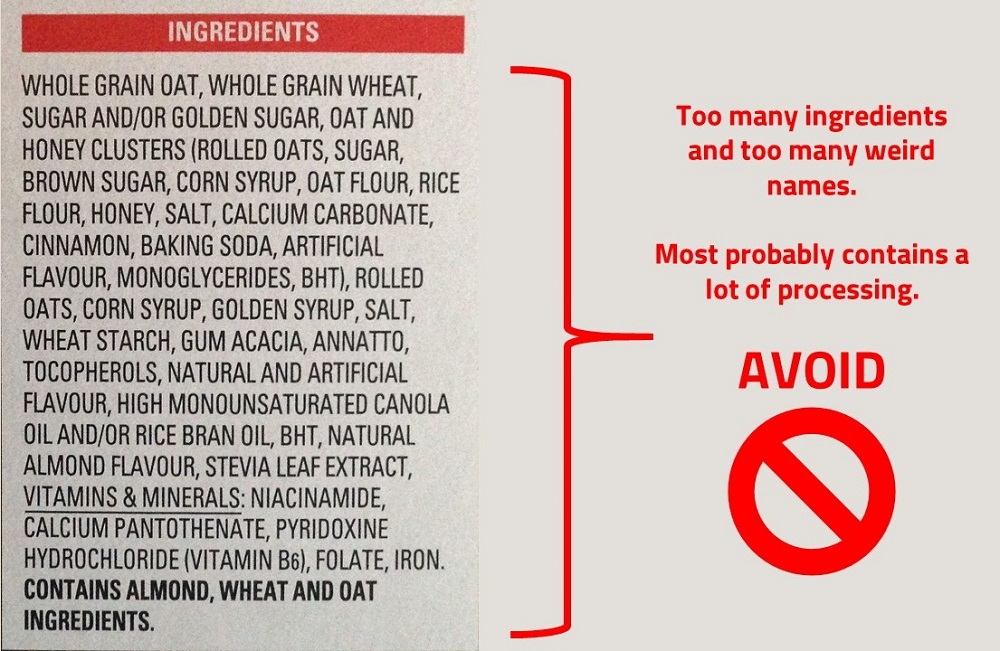
Not all products contain a detailed composition table. They might just list the ingredients one after the other.
Remember that in the ingredients list, the ingredients are listed from most dominant to least dominant.
Choose foods with a minimal amount of ingredients, chances are they are less processed. If the ingredient list contains a lot of things that you don't know, it is likely to contain a lot of processed food, avoid those.


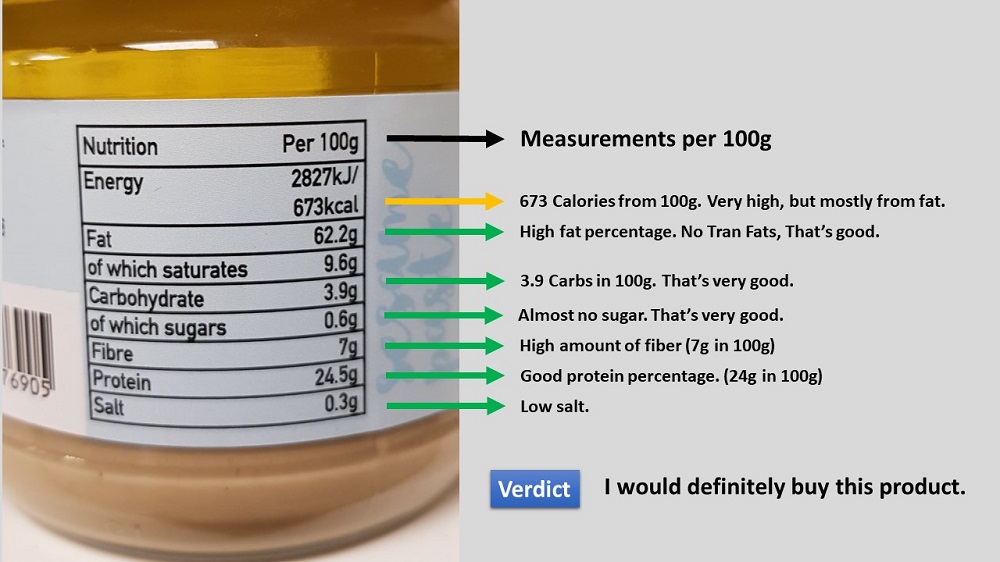
 Close
Close

























